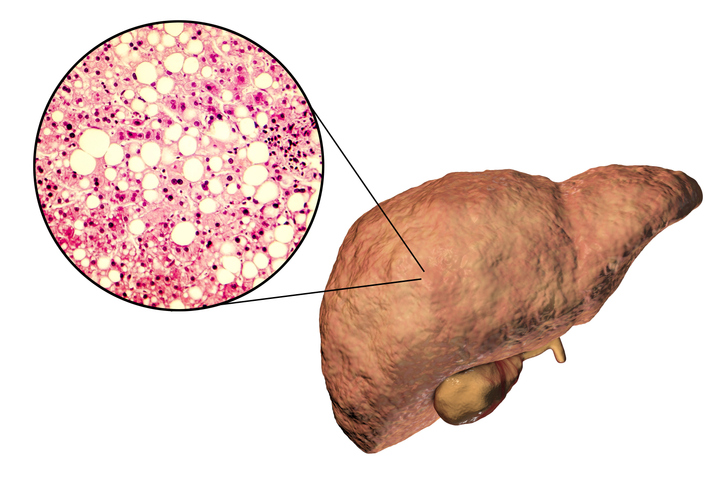
So Many Ways to “Get Paid” With This Game-Changing Drug
Fighting a Condition Afflicting Nearly One in Four People
| Below is the most recent issue of Biotech Frontiers, from analyst Erez Kalir. In this issue, Erez provides a recommendation, as well as the “3 Best Buys,” a feature that highlights the three stocks that new investors can purchase now. In addition to hosting Porter & Co. Biotech Frontiers on our website, we also make it available as a downloadable PDF. Subscribers can access this issue as a PDF on the “Issues & Updates” page here. If you have any questions, please give Lance, our Director of Customer Care, and his team a call at 888-610-8895 or internationally at 443-815-4447. Again, thanks for being part of Porter & Co. |
In 2001, as a junior surgical resident at Johns Hopkins University, a young Dr. Peter Attia (pictured above) was tasked with “pre-oping” patients slated for complex surgeries. His main job in the pre-op was to walk patients through the procedure they would undergo and ask them a series of questions carefully designed to elicit crucial information that would bear on their surgeries. One of the most important questions on his list was – “Do you drink alcohol regularly, and if so, how much?”
As Dr. Attia explained decades later in his wonderful book Outlive: The Science and Art of Longevity, which I wrote in depth about in the April issue, this question is important because patients who drink significant amounts of alcohol need to receive specific drugs during their recovery from surgical anesthesia. A failure to administer these drugs in a timely way can put these patients at risk of suffering a fatal form of severe alcohol withdrawal.
One day during his residency, Dr. Attia performed the pre-op for a patient due to have part of his ascending colon removed for cancer. He asked the patient about his alcohol consumption. The patient replied that he didn’t drink.
The next morning the patient went in for the operation. As the surgeons opened the patient’s abdominal cavity, his liver came into view. But instead of the deep, dark purple color that is the mark of a healthy liver, this patient’s liver was mottled and orangish, covered in nodules of yellow fat – features often seen in alcoholics. Dr. Attia turned ashen. The senior surgeon glared at him and barked: “You said this guy was not a drinker!”
Dr. Attia had not committed a mistake, and the patient had told the truth. When the patient awoke from anesthesia, he confirmed that he was in fact not a drinker. His liver nonetheless looked like that of an alcoholic because he suffered from a condition now known as MASH – metabolic dysfunction-associated steatohepatitis, a serious disease that occurs when fat builds up in the liver, causing inflammation and tissue damage.
MASH was originally discovered five decades before Dr. Attia’s story, in 1952, by another surgeon – Dr. Samuel Zellman. Dr. Zellman was operating on an acquaintance, an aide in his own hospital. He knew this patient did not drink alcohol. But he also knew a peculiar fact: this patient consumed a staggering amount of sugared soda, as many as 20 bottles of Coca-Cola per day. When Dr. Zellman saw the patient’s liver during surgery, he observed that it had the telltale appearance of an alcoholic’s.

His medical curiosity piqued, Dr. Zellman went on to recruit 19 other obese, non-alcoholic patients with a profile similar to his original patient’s and biopsied their livers. Sure enough, the results revealed notable impaired liver function in over half the cohort.
In the decades since Dr. Zellman first noticed this condition, MASH has grown into a global epidemic. Today, it’s estimated that more than one in four people on the planet has some degree of MASH or its precursor, known as NAFLD – non-alcoholic fatty liver disease. Most of these people aren’t aware of their situation, because in the early stages, MASH and NAFLD have no obvious symptoms. But in about 11% of MASH patients, their liver damage will eventually progress to cirrhosis, a life-threatening condition. And as Dr. Attia elaborates in Outlive, even in those patients who escape cirrhosis, MASH and NAFLD will dramatically elevate risks for other lethal diseases, including both cancer and cardiovascular disease.
Our recommendation this month is the stock of a small company holding a molecule that may well be the most promising therapy known for MASH and NAFLD. Although the company is the farthest thing from a household name, a long list of the world’s most sophisticated investors have already zeroed in on it. Best of all, we have a chance to invest alongside them at a significant discount to the prices they paid.
This month’s recommendation will also ring a familiar bell for our earliest Biotech Frontiers subscribers, as we originally recommended it as part of our basket of 10 negative enterprise-value (EV) stocks, in our January 2024 issue, “The Big Biotech Rebound.” Back then, our recommendation was driven purely by its negative EV. This month, we feature a deep dive into the company and walk through why it’s a more attractive investment today than ever.
This content is only available for paid members.
If you are interested in joining Porter & Co. either click the button below now or call our Customer Care team at 888-610-8895.